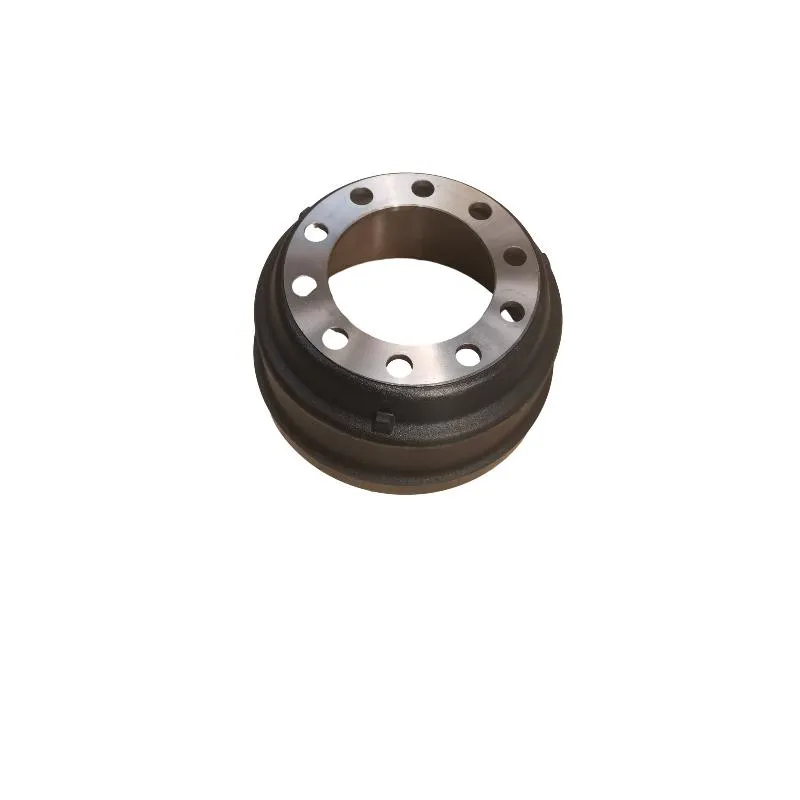Feb . 14, 2025 06:51 Back to list
how to remove a stuck brake drum
Removing a stuck brake drum can be a challenging task, often testing both patience and skill. When a brake drum refuses to budge, it's crucial to approach the procedure with a blend of practical expertise and specialized knowledge to ensure the task is completed effectively and safely.
Advanced Techniques Handling Stubborn Brake Drums 1. Gentle Hammering Use a mallet or ball-peen hammer to tap evenly around the drum. The vibrational force can help dislodge rust and corrosion, loosening the drum's grip. Care must be taken to apply controlled force to prevent damaging the drum or internal components. 2. Adjust the Brake Shoes Sometimes the brake shoes may be pressing against the drum, creating additional friction. Manually adjusting the brake shoe adjuster with a flathead screwdriver can alleviate this tension, making removal easier. 3. Brake Drum Puller If manual techniques prove unsuccessful, employing a brake drum puller is advisable. This specialized tool exerts uniform force around the drum, gradually pulling it away from the hub. Since it is specifically designed to handle brake drums, it minimizes the risk of damage. Safety Considerations and Expert Tips Always prioritize safety by wearing gloves and protective eyewear to shield against debris or accidental tool mishaps. Maintain a steady stance and use the appropriate leverage to prevent strain or injury. Understanding the limits of your mechanical knowledge is vital; if removal attempts culminate in frustration or potential risk, consultation with a professional mechanic is advisable. Prevention Maintaining Brake Drums for Longevity Proactive maintenance can significantly reduce the likelihood of encountering a stuck brake drum in the future. Regularly cleaning and servicing the brake system, along with the application of anti-seize compounds during reassembly, can prevent rust buildup and ensure smoother operation. Consistent inspection for wear and tear also extends the life of brake components, promoting safer driving experiences. In summary, removing a stuck brake drum demands a combination of patience, proper tools, and comprehensive understanding of the brake system. By adhering to structured preparation, employing effective removal techniques, and committing to ongoing maintenance, individuals can confidently address and prevent stuck brake drum scenarios.


Advanced Techniques Handling Stubborn Brake Drums 1. Gentle Hammering Use a mallet or ball-peen hammer to tap evenly around the drum. The vibrational force can help dislodge rust and corrosion, loosening the drum's grip. Care must be taken to apply controlled force to prevent damaging the drum or internal components. 2. Adjust the Brake Shoes Sometimes the brake shoes may be pressing against the drum, creating additional friction. Manually adjusting the brake shoe adjuster with a flathead screwdriver can alleviate this tension, making removal easier. 3. Brake Drum Puller If manual techniques prove unsuccessful, employing a brake drum puller is advisable. This specialized tool exerts uniform force around the drum, gradually pulling it away from the hub. Since it is specifically designed to handle brake drums, it minimizes the risk of damage. Safety Considerations and Expert Tips Always prioritize safety by wearing gloves and protective eyewear to shield against debris or accidental tool mishaps. Maintain a steady stance and use the appropriate leverage to prevent strain or injury. Understanding the limits of your mechanical knowledge is vital; if removal attempts culminate in frustration or potential risk, consultation with a professional mechanic is advisable. Prevention Maintaining Brake Drums for Longevity Proactive maintenance can significantly reduce the likelihood of encountering a stuck brake drum in the future. Regularly cleaning and servicing the brake system, along with the application of anti-seize compounds during reassembly, can prevent rust buildup and ensure smoother operation. Consistent inspection for wear and tear also extends the life of brake components, promoting safer driving experiences. In summary, removing a stuck brake drum demands a combination of patience, proper tools, and comprehensive understanding of the brake system. By adhering to structured preparation, employing effective removal techniques, and committing to ongoing maintenance, individuals can confidently address and prevent stuck brake drum scenarios.
Latest news
-
Your Brake Drum Man: Premium & Reliable Brake Drums for Sale
NewsAug.18,2025
-
ROR Web Development: Build Fast, Scalable, Secure Apps
NewsAug.17,2025
-
Scania Brake Drums: OEM Quality for Optimal Safety & Durability
NewsAug.16,2025
-
R.V.I: Advanced Remote Visual Inspection for Precision
NewsAug.15,2025
-
Discover HYUNDA: Innovative Vehicles, Equipment & Solutions
NewsAug.14,2025
-
R.V.I: Unlock Advanced Insights & Real-time Performance
NewsAug.13,2025
